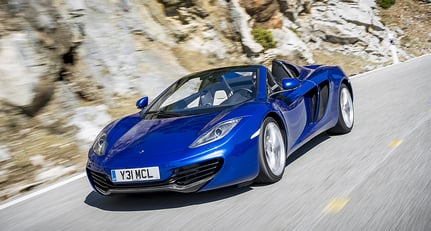Sometimes, even cars of such monstrous pace can cause the critics to come over all ultra-objective, as though refusing to be swayed by anything so, well, unprofessional as being thrilled.
And then there was the matter of the Ferrari 458 arch-rival. Ferraris thrill, of course, because that's what Ferraris do. But the same assumption cannot be made of a McLaren. The MP4-12C could not tiptoe into contention; it had to stamp its feet. Hard.
I reported more positively than most on the new McLaren. I liked its usability and relative visual discretion, and thought I'd have a better time, more often, in the British car than in the Italian one. But was authority stamped? Not properly, perhaps.
Between then and now, things have happened in the Norman Foster-designed palace of technology that is the McLaren factory. And, right now, I am driving possibly the most thrilling, most capable, most supernaturally stunning road car I have ever driven. The road is the fast, winding, hilly one from Ronda to Malaga in southern Spain, the car is the latest version of the MP4-12C. It's the new Spider model, which is a story in itself, but at this precise moment it makes no difference whether the car is open or closed – especially as the two versions are identical in structural stiffness and chassis set-up, so should feel identical to drive bar the wind and the access to soundwaves.
Provided the engine is spinning beyond 3000rpm, enough to minimise the lag from the V8 engine's twin turbochargers, the acceleration is extraordinarily, almost dimension-departingly intense. Full noise in second gear requires a clenching of the stomach to avoid gastric pain, and it barely abates in third. Only in seventh gear does the invisible hand withdraw, but by then you are doing just 2300rpm at 80mph.
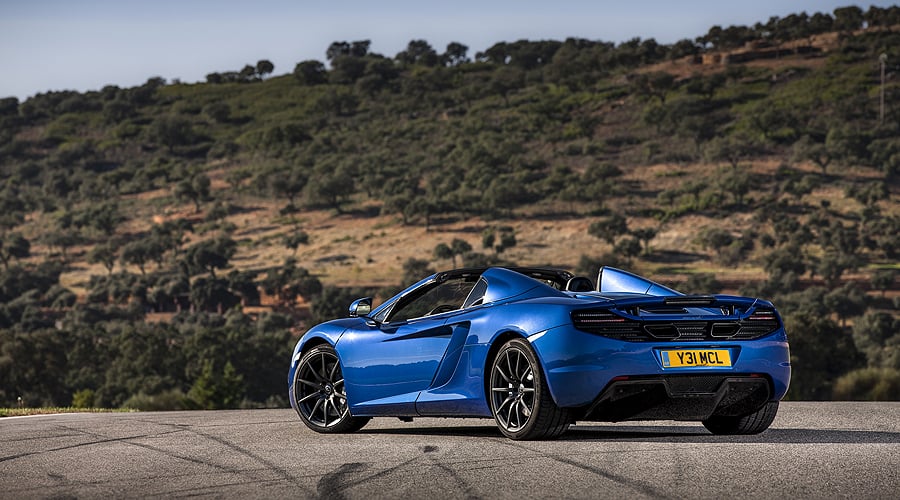
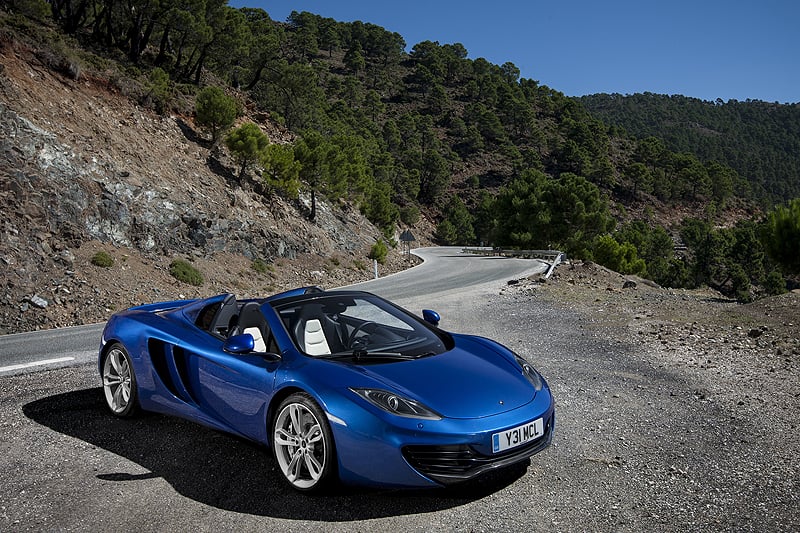
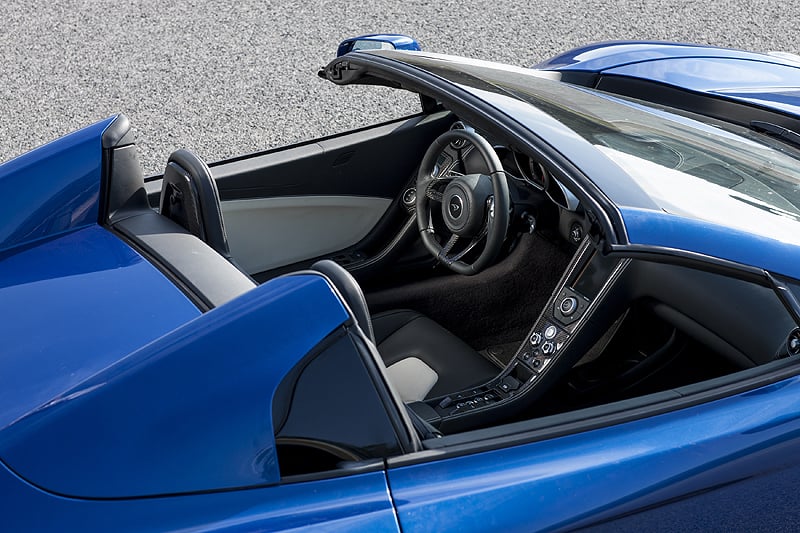
That's an interesting speed, fast enough to get you into trouble with the law on European two-way roads yet barely a canter for the McLaren. You take bends without slowing down, and you wonder why everyone else is driving so slowly. Your mind is quickly recalibrated when your car can reach 124mph from a standstill in just nine seconds, having passed half that speed in 3.1. You'll spot from these figures that the McLaren is even faster than it was at first, thanks to an extra 25bhp for the 3.8-litre, flat-crank V8. This total of 625bhp can be retro-applied, free of charge, to owners of existing MP4-12Cs, who can also benefit from the revised programming of the seven-speed, double-clutch gearbox.
Among my test car's £40,000-or-so tally of options, much of it made up of extra slices of visual carbonfibre at around £2000 a slice, is a sports exhaust system. It's hard to know why such a car wouldn't have such a set of tubes as standard, but the combination of the now-perfect gearchanges (be they manual or automatic), the heightened savagery of the acceleration, the more faithful throttle response and this exhaust system, soundly kicks any notions of clinicality into the undergrowth… along with the particles of rubber from the tyres as you rip through another bend.
This McLaren sounds marvellous. Not as strident as a 458, not as metallic, but possessing the hard, complex near-shriek of an old Cosworth DFV Formula One engine when giving its all. The exhaust splutters and harrumphs with theatrical impatience when you decelerate, then the wall of sound rears up again as the power pours back. Even without this optional exhaust system, though, the Spider is tuned to sound more dramatic than the coupé, McLaren taking the view that if you want a Spider, you're likely to want to hear its engine in action.
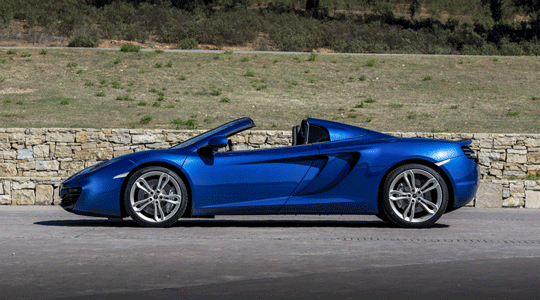
Here's another fast bend. I brake, pedal ultra-firm, carbon-ceramic discs rubbing off the speed instantly. I turn; the front wheels really do seem to be following invisible rails as the rear wheels settle into the gentlest of drifts, power building through them. The brake-steer system is designed to kill understeer on entering a corner and it does exactly that, nudging the inside front wheel to help point the nose, and it means you can get on the power unusually early.
Then you feel the vast grip, yet it's a grip through which you can play with the McLaren's attitude at will, such is the confidence it inspires. The steering is completely intuitive, and you find yourself committing to corners in a way you would never dare in any other car. It's as if the McLaren has no inertia, so cleverly channelled are the forces acting upon it. On the track earlier, I found myself nudging the Spider into little powerslides almost without meaning to, simply because I'd gone into bends too quickly, had to back off, felt the line tighten, then applied a dose of power. It was easy and natural, yet thrilling because here was I, a galaxy away in ability from Messrs Button and Hamilton, mastering all that pace.
Then there's the ride, unspoilt by stiff anti-roll bars because it has none. Instead, the active dampers do the job of keeping the MP4-12C on an even keel, while allowing an uncanny combination of suppleness and body control. Set the suspension and engine/gearbox controls to Normal, and not only is the Spider ultra-comfortable, it doesn't even make much noise unless roused. You need Sport or Track to hear it in full voice.
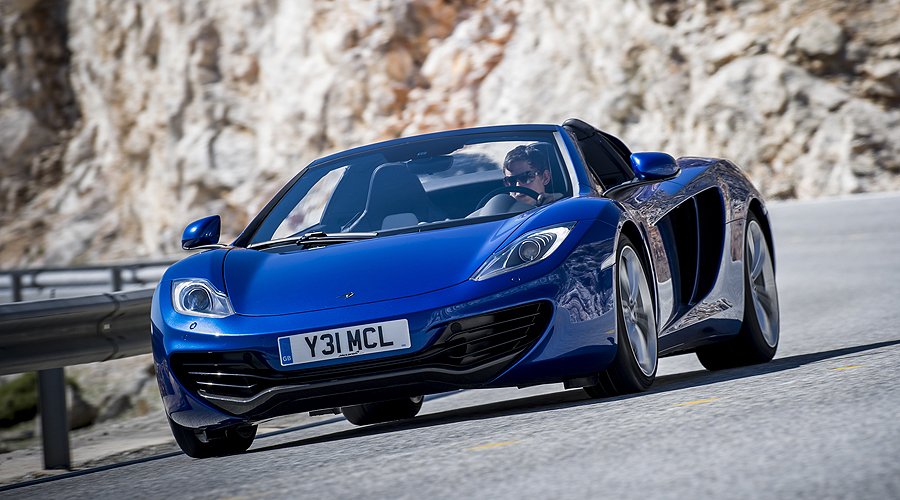
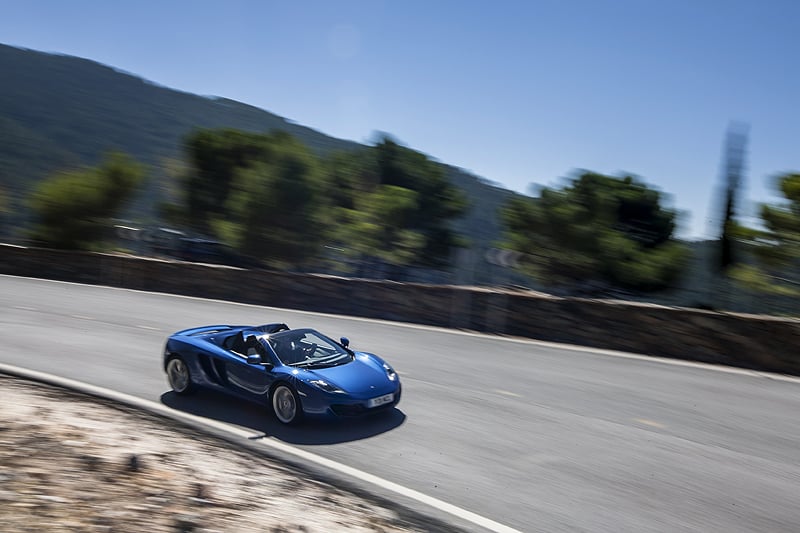
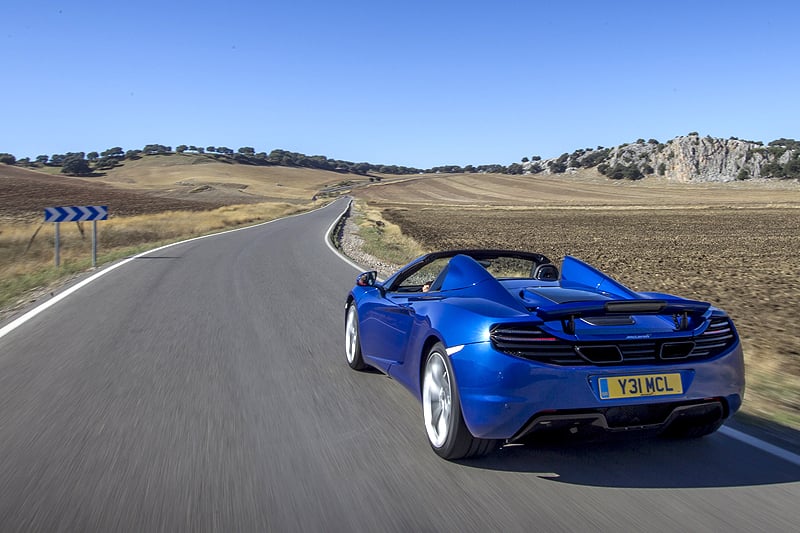
In its latest form, then, the MP4-12C is stunningly good. As a way of demolishing roads and rematerialising at your destination in record time, it is surely unrivalled. It will take you to places beyond any motoring experience you're likely to have had to date. But this test is specifically of the new Spider version, so: is it a good Spider?
As mentioned, the structural carbonfibre tub is unchanged. The roof is in two parts, and electro-hydraulically folds into the valley behind the cabin under a hinged cover. With the roof closed, that cover acts as the lid for an extra luggage space, and it has two foldable bags stored in its underside ready for use when needed. Opening or closing the roof takes 17 seconds, and can be done while driving at up to 19mph.
Roof-up, the Spider looks a little different from the coupé mainly in the shape of the rear side windows (much smaller) and the rear deck (higher). Inevitably, the view over the shoulder or via the rear-view mirror is rather less panoramic than in the coupé; indeed, if another MP4-12C is following closely you might not know it's there.
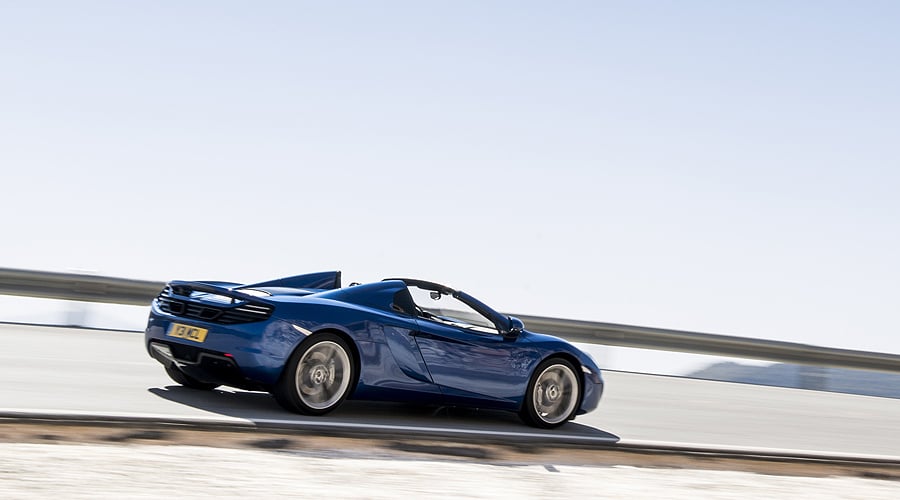
The vertical rear window automatically lowers about a third of its total travel when the roof is opened, a position which gives the least wind buffeting in the cabin. Nevertheless, there's still a lot of air flying around, much more than in a Ferrari 458 Spider, and you have to shout at speed if you want to converse with your companion. Or you can lower the window completely and savour the sound effects aft; doing this with the roof up, creating a sort of acoustic tunnel, gives the best soundscape of all. Especially if you happen to be driving through a tunnel at the time, and you take the engine to its 7500rpm power peak or beyond.
Otherwise, with the rear window and roof closed the Spider is much like the coupé. Wind noise is minimal, and there's still very little space to store anything in the cabin thanks to the lack of door pockets or a glovebox, although the front boot is quite capacious. You now open the up-and-out doors via a concealed button instead of by wiping a sensor, so opening is more reliable, but they still lack a positive click as they shut. And the sat-nav – McLaren's own – is both hesitant and lacking in useful information. Improvements are promised.
You don't buy a McLaren MP4-12C for the sat-nav, though. You buy it because it might just be the most crushingly capable and viscerally thrilling road car you can buy, almost other-worldly in its capabilities. The coupé costs £176,000, the Spider £195,000. Would you pay an extra £19,000 for the open-air option? Given the enhanced aural effects that go with the ruffled hair, I do believe I would.
Text: John Simister
Photos: McLaren Automotive
